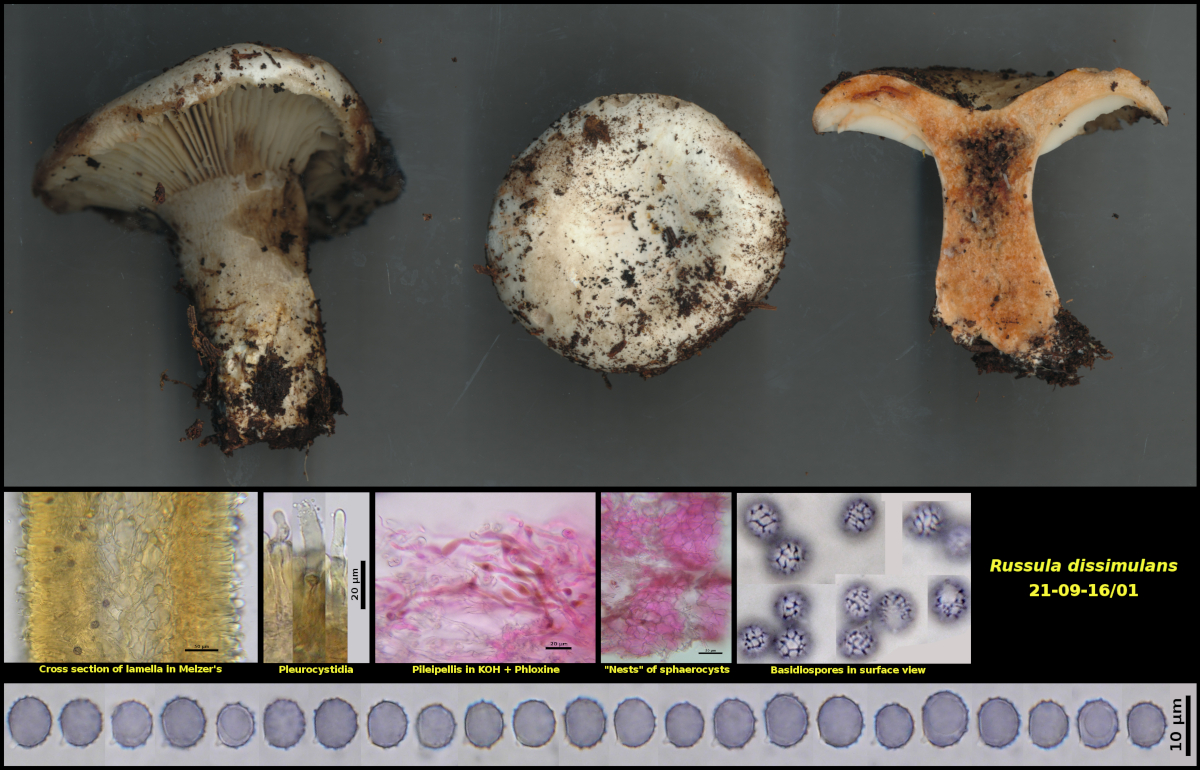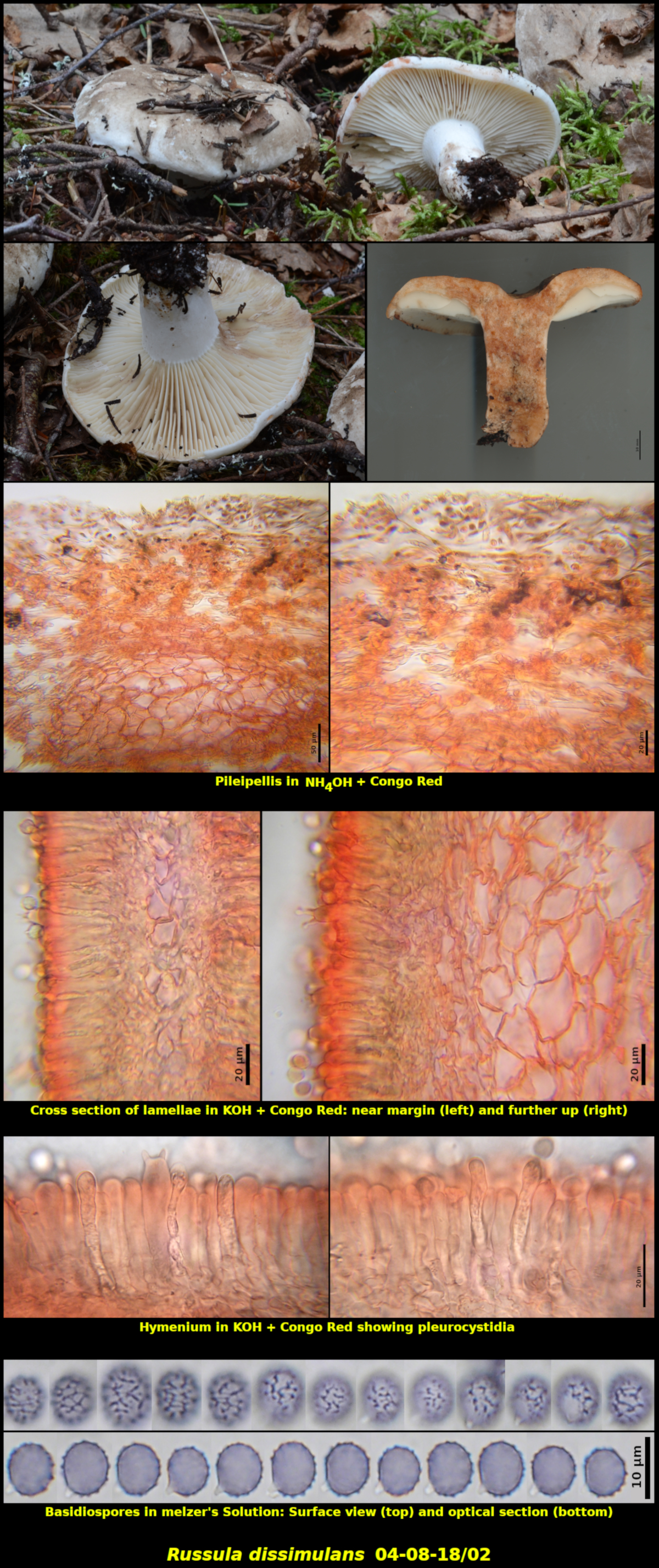Fleshy Fungi of New Brunswick >>
Russula dissimulans
Russula dissimulans Shaffer


Two collections:
1. Gregarious to clustered in litter in mature forest under Abies balsamea, Little Lepreau, New Brunswick (21-09-16/01).
Basidiospores subsphaerical, with prominent ridges forming a nearly complete reticulum, 6.8-8.9 X 6.0-7.3 μm, D/d = 1.10-1.22.
2. Gregarious (many) in litter or among pleurozia under Abies balsamea, Picea rubens and Betula cordifolia. Partially submerged in the soil at first, but becoming more exposed at maturity – Little Lepreau, New Brunswick (04-08-18/02).
- Basidiospores white in spore print, broadly ellipsoidal to subglobose, amyloid, 7.5-10.2 x 6.4-7.7 µm, Q = 1.11-1.33 (average[34]: 8.3 x 7.0 µm, Q = 1.18), with ornamentation composed mostly of interconnected lines forming a partial to complete reticulum, rarely with more isolated warts and ridges, with ornamentation up to 0.8 µm high. Pleurocystidia abundant, inconspicuous, not projecting beyond the basidia, irregularly clavate to nearly cylidrical, 38-45 x 3.8-6.4 µm. Pileipellis a rather dense cutis or trichodermium, without cystdia, about 30-50 µm thick.
Russula dissimulans is one of several species of Russula characterized by white to pale grey or nearly black caps, abundant short gills (lamellulae) and flesh that turns red when cut or bruised. According to Shaffer, R. dissimilans, described from North America, is very similar to the Europen R. nigricans, differing mainly in its less distant gills and larger basidiospores with higher ornamentation (up to 0.7 µm high). It is also similar to R. densifolia, but that species has a pileipellis 150 µm or more in thickness embedded in a conspicuous gelatinous matrix.
Russula imitatrix is another species that is said to be similar to R. dissimulans. It was originally described by Drs. Homola and Shaffer from material collected under hemlock and pine in Penobscot Co., Maine, but later also found in New Brunswick, Nova Scotia anjd Quebec. It differs from R. dissimulans in lacking colour changes in the cut flesh and in having vascular hyphal ends in the pileipellis that bud in a finger-like manner.
It is can be found in the humid coniferous forests along the Bay of Fundy where it can become very abundant in some years. According to the field notes for Collection 04-08-18/02 this mushroom was remarkably abundant in 2018. Also very abundant that year were Lactarius aquifluus, Amanita flaviconia and Boletus subvelutipes. This in spite of a very warm and dry summer.
Photograph: D. Malloch (21-09-16/01, 04-08-18/02).